Understanding the Complexities of Autism and Empathy
Autism spectrum disorder (ASD) is often misunderstood as a lack of empathy, but recent research and lived experiences highlight a nuanced picture. Empathy in autism is diverse, multifaceted, and sometimes even heightened, challenging stereotypes and opening pathways for improved social understanding and support. This article explores the intricate relationship between autism and empathy, examining scientific findings, societal perceptions, and the lived realities of autistic individuals.
Defining Empathy and Its Components in Autism
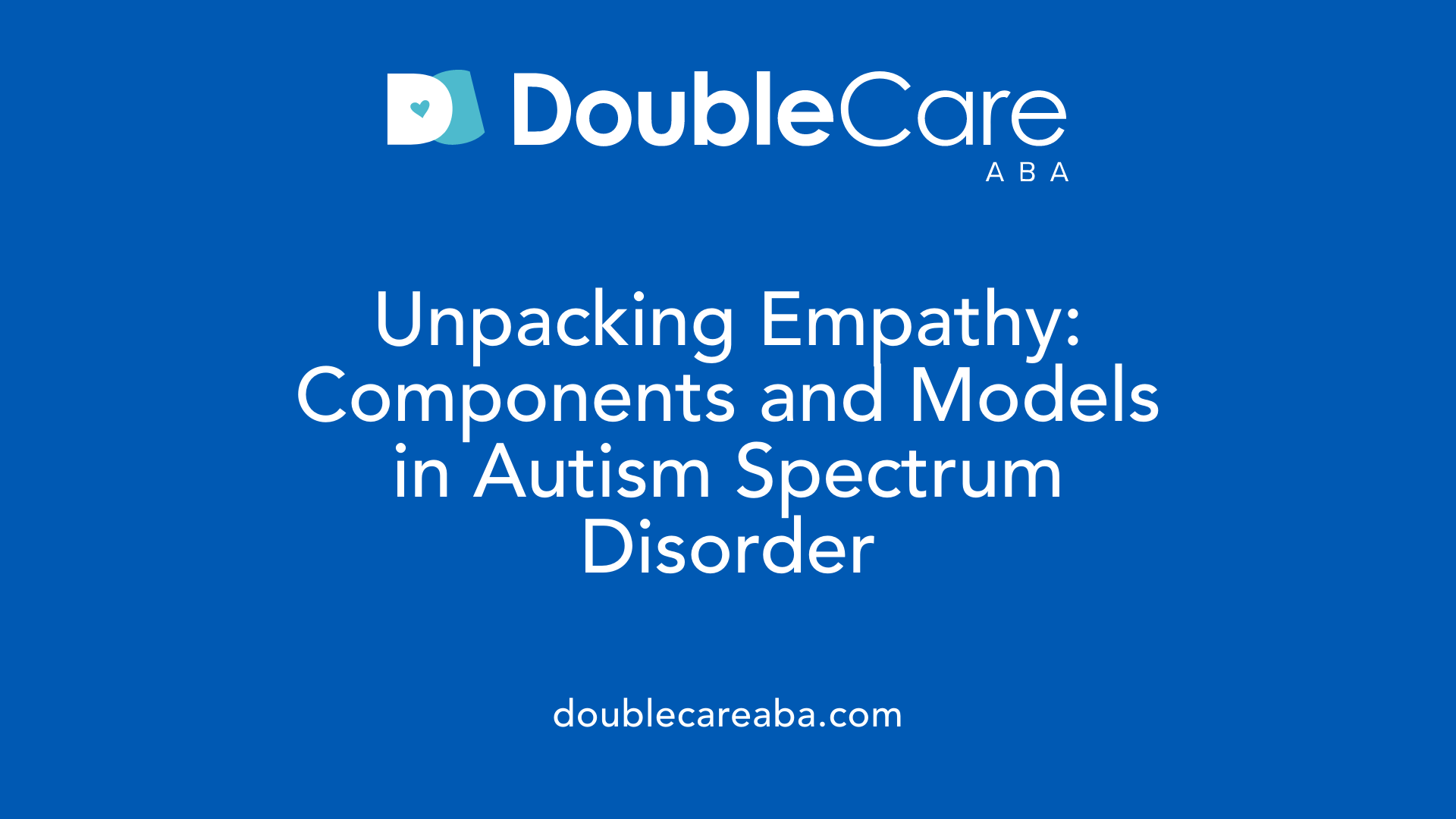
What is the relationship between autism and empathy, including the different types of empathy and theoretical models?
Autism spectrum disorder (ASD) involves varied social and emotional experiences, particularly in how empathy is experienced and expressed. Traditionally, it was believed that autistic individuals had an inherent empathy 'deficit,' especially in the realm of cognitive empathy—the ability to understand what others are thinking or feeling. This belief supported theories like the 'theory of mind' hypothesis, which suggested impairments in perspective-taking.
However, recent research offers a more nuanced view. While some autistic individuals may face challenges in recognizing emotions through nonverbal cues such as facial expressions or gestures, many experience affective or emotional empathy—an ability to feel or share others’ emotions—just as intensely, if not more so, than neurotypical individuals.
This spectrum of empathic responses includes hyper-empathy (being overly sensitive to others’ emotions), compassion, and motor empathy. Hyper-empathy refers to heightened emotional responsiveness, which can sometimes lead to emotional overwhelm or distress, especially when overwhelmed by negative emotions. Conversely, motor empathy involves the mirroring of others’ physical expressions of emotion, such as facial mimicry—a process that may be impaired in some autistic individuals.
A significant advancement in understanding these complexities is the 'double empathy problem,' proposing that social difficulties are mutual and reciprocal, not solely attributable to deficits in autistic individuals. This framework emphasizes that both autistic and non-autistic people can struggle to understand each other's emotional worlds equally, highlighting the importance of social context.
Empirical findings show that many autistic individuals demonstrate strong emotional responses and empathy that manifests in various ways, such as caring behaviors, sharing emotional states, or forming deep connections within familiar or similar social environments. These insights challenge stereotypical views, illustrating that empathic capacity is diverse and multidimensional, encompassing both strengths and difficulties depending on context and individual traits.
Understanding empathy in autism entails recognizing its different components and their interactions. Cognitive empathy involves mental perspective-taking, whereas affective empathy relates to feeling others' emotions. Both play crucial roles in social function. Advanced research utilizing tools like the Textual Empathy Test and neuroimaging techniques reveals that autistic people often show typical or heightened neural responses related to empathy, but differences may exist in how these responses are expressed or processed.
In sum, autism and empathy are connected in complex ways that defy simplistic deficit models. Appreciating the variety of empathic experiences—from difficulty recognizing emotions to hypersensitivity—supports more nuanced understanding, fostering societal acceptance and improving social interactions.
Challenging the Empathy Deficit Stereotype
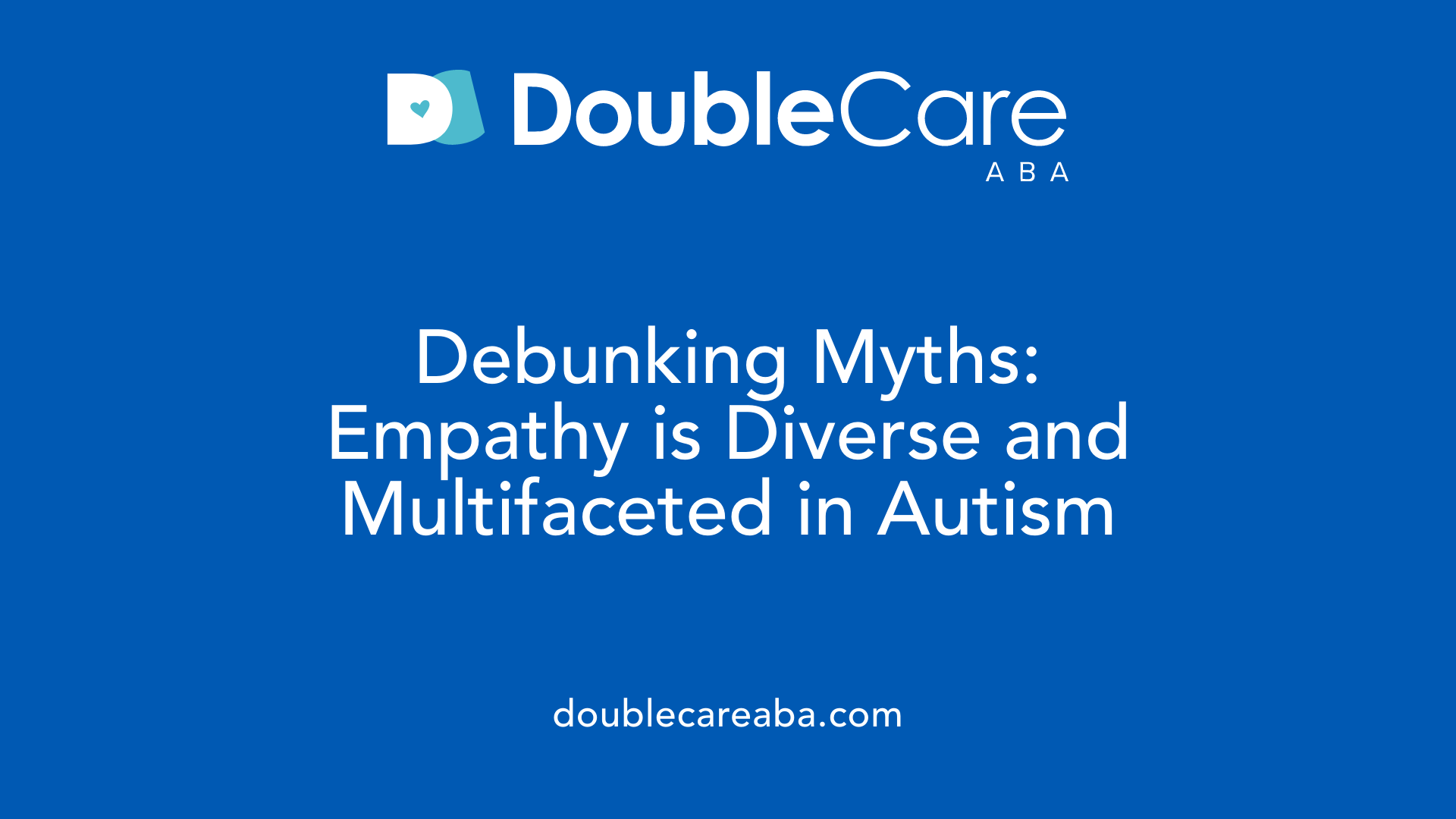
What are the common misconceptions and stereotypes about autism and empathy?
A widespread misconception is that all autistic individuals lack empathy or are emotionally detached. This stereotype has persisted since early descriptions of autism, often framing autistic people as indifferent or unable to connect emotionally with others.
In reality, empathy among autistic individuals varies greatly. Some may experience heightened or hyper-empathic responses, feeling others' emotions intensely and sometimes overwhelmed by these feelings. Others might find it effortful to interpret social cues and recognize emotions, making empathetic responses seem less apparent.
Recent research and voices from autistic communities challenge the idea of an inherent empathy deficit. Many autistic people demonstrate strong emotional empathy and are capable of deep caring and genuine connection, though they might express these feelings differently or face difficulties in traditional social contexts.
Misunderstanding these diversity of empathy experiences can lead to harmful societal attitudes, including stereotyping, prejudice, and discrimination. It can also result in misdiagnoses or assumptions that autistic people are uncaring or lack emotion.
Recognizing that empathy is a complex, multidimensional construct helps to break down these stereotypes. Emphasizing the variety in how empathy is experienced and expressed encourages a more accurate, respectful understanding that has positive implications for social acceptance and support.
Empathy and Autism: The Theoretical Landscape
What is the relationship between autism and empathy, including the different types of empathy and theoretical models?
The connection between autism and empathy is multi-dimensional and nuanced. Traditionally, autism was associated with a deficit in empathy, particularly in understanding others’ mental states—a concept linked to the 'theory of mind'. This theory suggested that autistic individuals struggle with perspective-taking and interpreting social cues, leading to misunderstandings and social difficulties.
However, recent research paints a broader picture. It indicates that many autistic people possess preserved or even heightened emotional empathy, feeling others’ emotions intensely—even if they express these feelings differently or less overtly. This variation points to a differentiation between cognitive empathy, which involves understanding others’ thoughts and feelings, and affective empathy, which is about sharing and responding to these affective states.
Advanced studies using technologies like neuroimaging and behavioral assessments reveal that emotional responses—such as neural activation related to feeling with others—are often intact or amplified in autistic individuals. This contradicts older stereotypes of a universal empathy deficit.
Complementing these insights is the 'double empathy problem', a framework proposing that social difficulties between autistic and non-autistic individuals stem from mutual misunderstandings rather than unilateral deficits. This concept emphasizes that both groups may experience challenges in decoding social signals, leading to reciprocal communication barriers.
Research into empathy models also highlights that social context, relationships, and familiarity influence empathic responses. Autistic individuals tend to empathize more readily with close others, animals, or fellow autistic people, suggesting that social proximity and shared experiences foster meaningful connections.
These evolving understandings underscore that empathy in autism is not a simple binary — it involves diverse experiences, capacities, and expressions. Recognizing strengths in emotional empathy alongside challenges in perspective-taking supports a more compassionate and accurate view of autism.
In summary, moving beyond the simplistic 'lack of empathy' stereotype allows for a richer appreciation of autistic individuals’ emotional lives. It encourages practices and societal attitudes grounded in mutual understanding, acceptance, and the acknowledgment of varied ways of experiencing and expressing empathy.
Empathy Challenges and Their Manifestations
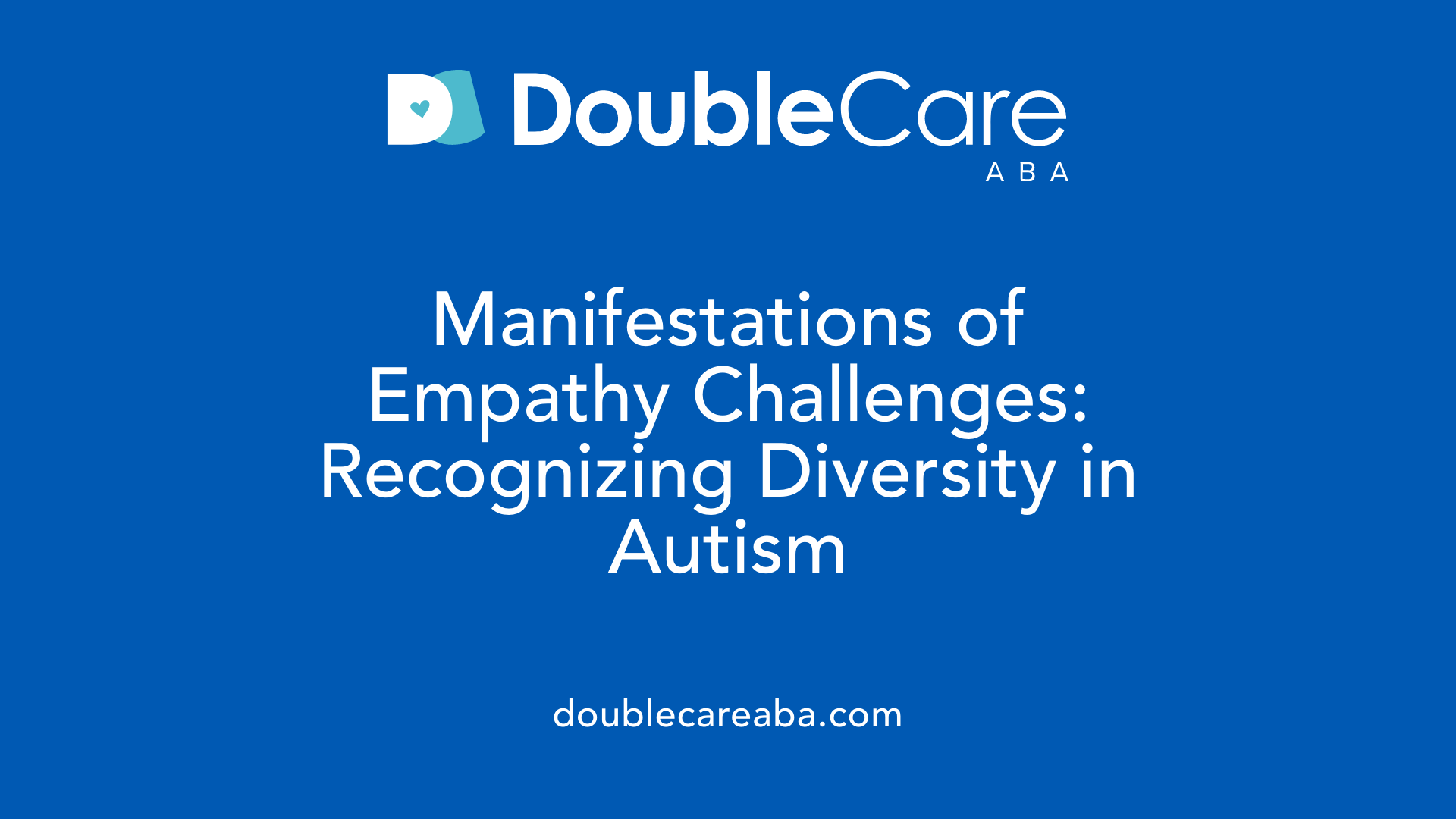
How do empathy challenges manifest in autistic individuals, and what are some related factors like alexithymia, gaze behaviors, and social cognition?
Autistic individuals often face a complex array of experiences with empathy that challenge traditional stereotypes of a simple 'empathy deficit.' Instead of lacking empathy altogether, many exhibit an imbalance between emotional empathy—feeling others' emotions—and cognitive empathy—the ability to understand others' perspectives.
Research highlights a phenomenon called empathic disequilibrium, where one component of empathy, typically emotional empathy, dominates, or conversely, lags behind. Such imbalances are linked to higher levels of autistic traits and a formal diagnosis. For example, heightened emotional responses can lead to distress or overwhelm, especially in social situations that involve negative emotions.
Facilitators like alexithymia—difficulty recognizing and articulating one's own emotions—play a significant role. Around half of autistic individuals also experience alexithymia, which hampers emotional awareness and regulation. Gaze behaviors, such as reduced eye contact and altered facial mimicry, further influence emotional recognition and social reciprocity, affecting how empathy is experienced and expressed.
Social cognition deficits, especially in perspective-taking, compound these challenges. Autistic people often struggle to interpret nonverbal cues like facial expressions or gestures, which are crucial for emotional recognition. Yet, this does not mean they lack empathy; rather, their empathic responses may be atypical, intense, or context-dependent.
Gender differences add another layer of complexity. Studies show that autistic females tend to display more emotional ('EE'-dominance) empathy, sometimes experiencing stronger neural responses to social pain, but may also have difficulty disentangling their own perspective from others'. This nuanced picture underscores that empathy in autism is multidimensional and deeply influenced by sensory processing, social environment, and individual differences.
In sum, autism-related empathy challenges are manifest through emotional regulation difficulties, social attention variations, and component imbalances—all of which highlight the importance of understanding empathy as a diverse and dynamic experience rather than a simple lack.
Types of Empathy in Autistic Individuals
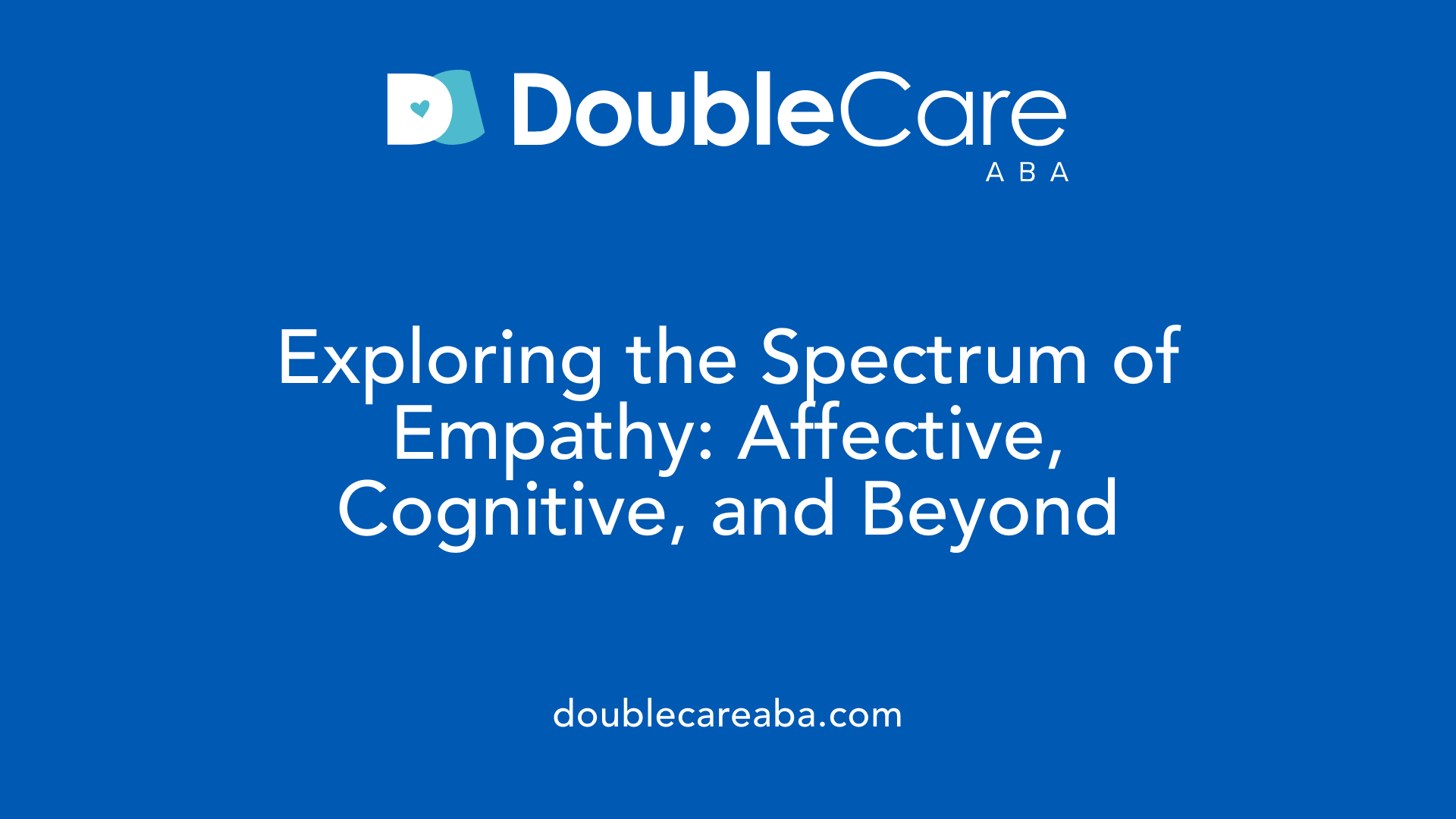 Empathy is a complex trait that exists in different forms, each playing a role in how individuals relate to others. The main types include affective empathy, cognitive empathy, hyper-empathy, and motor empathy.
Empathy is a complex trait that exists in different forms, each playing a role in how individuals relate to others. The main types include affective empathy, cognitive empathy, hyper-empathy, and motor empathy.
Affective empathy, or emotional empathy, involves sharing and feeling others' emotions deeply. Many autistic individuals experience heightened emotional responses, especially to negative emotions, which can sometimes lead to overwhelm or distress. This increased sensitivity can make emotional empathy appear intense, and in some cases, autistic people may become overwhelmed by others’ feelings, leading to emotional 'infection' or over-arousal.
Cognitive empathy, on the other hand, refers to the ability to understand others’ mental states and perspectives. Research suggests that many autistic individuals face challenges with cognitive empathy, particularly with tasks like reading facial expressions or grasping social cues. Difficulties in theory of mind—the capacity to understand that others have different thoughts and feelings—are well documented and can impact social interactions.
Hyper-empathy is a heightened form of empathy where individuals feel and resonate with others’ emotions to an extreme. In autism, hyper-empathy can involve a strong emotional response to negative sentiments, sometimes resulting from emotional overload. This might be amplified by sensory sensitivities or trauma, leading to intense emotional experiences that are difficult to manage.
Autistic individuals may also exhibit differences in motor empathy, which involves automatic mirroring or mimicry of facial expressions and gestures. Some studies indicate that impairments in these automatic responses can affect social exchanges.
Importantly, these different empathy types often coexist within autistic individuals. Many exhibit high affective empathy but struggle with cognitive aspects like perspective-taking. This imbalance, sometimes called empathic disequilibrium—where emotional empathy surpasses cognitive empathy—is common and contributes to differences in social behavior.
Contrary to stereotypes that suggest a lack of empathy, neurodiverse research highlights that autistic people experience empathy in unique ways. Their internal emotional world might be intense and rich, but societal misunderstandings about emotional expression can obscure this depth. Understanding these diverse empathy profiles helps promote more acceptance and reduces harmful stereotypes, emphasizing that autism's social differences are often rooted in variability of empathy, not absence.
Societal Attitudes and Their Impact
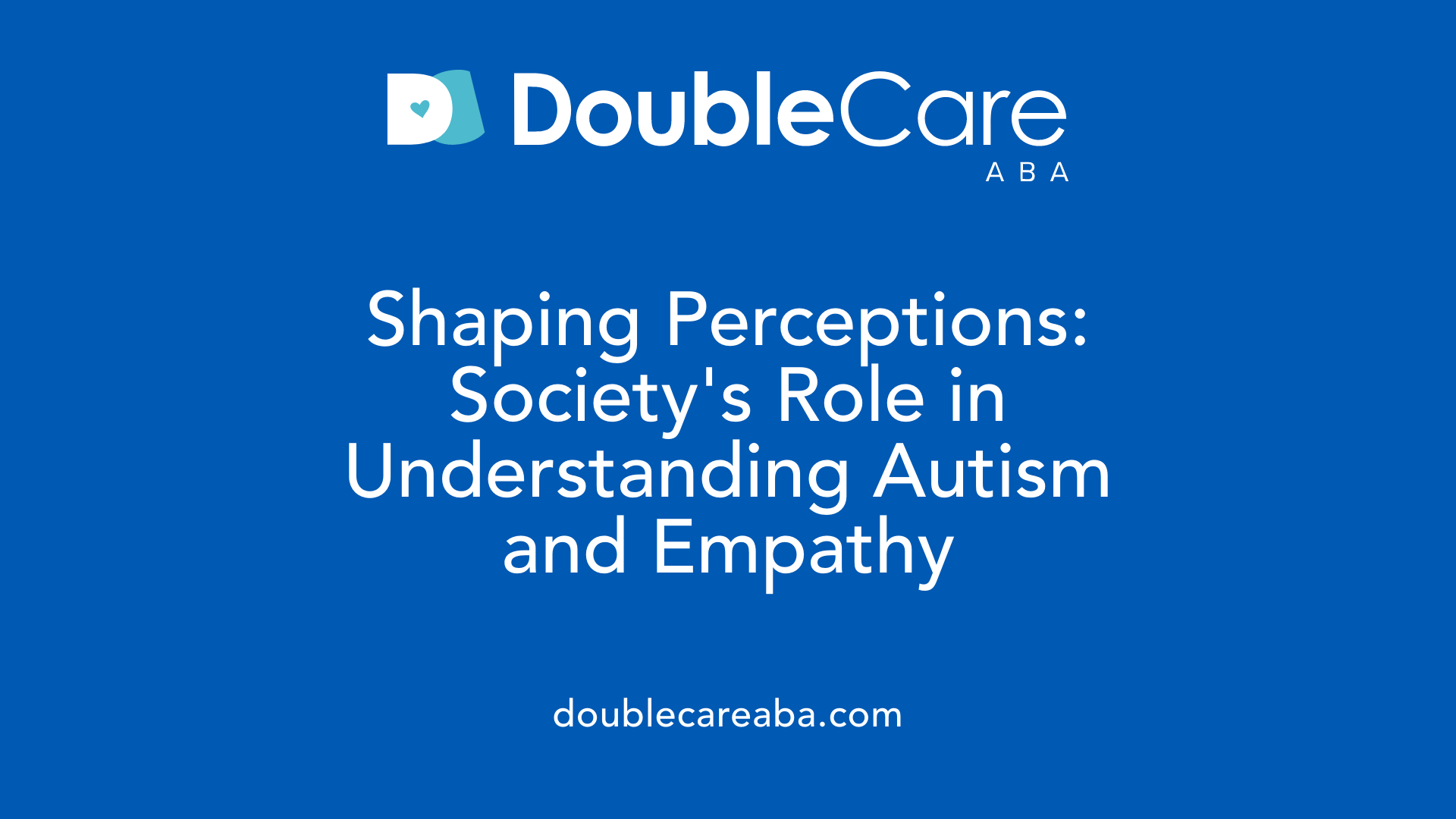
How do societal attitudes, community perceptions, and awareness influence understanding autism and empathy?
Public perceptions of autism and empathy play a crucial role in shaping societal responses and interactions with autistic individuals. Historically, stereotypes have persisted, such as the belief that autistic people lack empathy. This misconception leads to prejudice and can foster social exclusion, misjudging autistic behaviors as uncaring or indifferent.
However, recent research and the voices of autistic individuals challenge this outdated narrative. Evidence shows that empathy in autism is diverse, with some individuals experiencing hyper-empathy, intense emotional responses, or effortful, conditional empathy. Recognizing this diversity is vital for fostering understanding and dispelling stereotypes.
Awareness campaigns and educational efforts can significantly influence community perceptions. When society becomes informed about the complex, multidimensional nature of empathy in autism, misconceptions diminish. Increasing understanding reveals that many autistic individuals have strong feelings and can experience empathy deeply, even if they express it differently.
Greater community understanding encourages acceptance and supports social inclusion. This shift reduces stigma, promotes respectful interactions, and improves mental health outcomes for autistic individuals. Education that emphasizes the variability of empathic experiences helps create a more empathetic society—one that values neurodiversity and recognizes the importance of mutual respect.
In summary, societal attitudes shape much of how autistic empathy is perceived. Moving towards awareness and acceptance not only reduces prejudice but also fosters a more inclusive environment where autistic individuals can express and experience empathy in ways that are authentic to them.
Personal Perspectives: Autistic Voices on Empathy
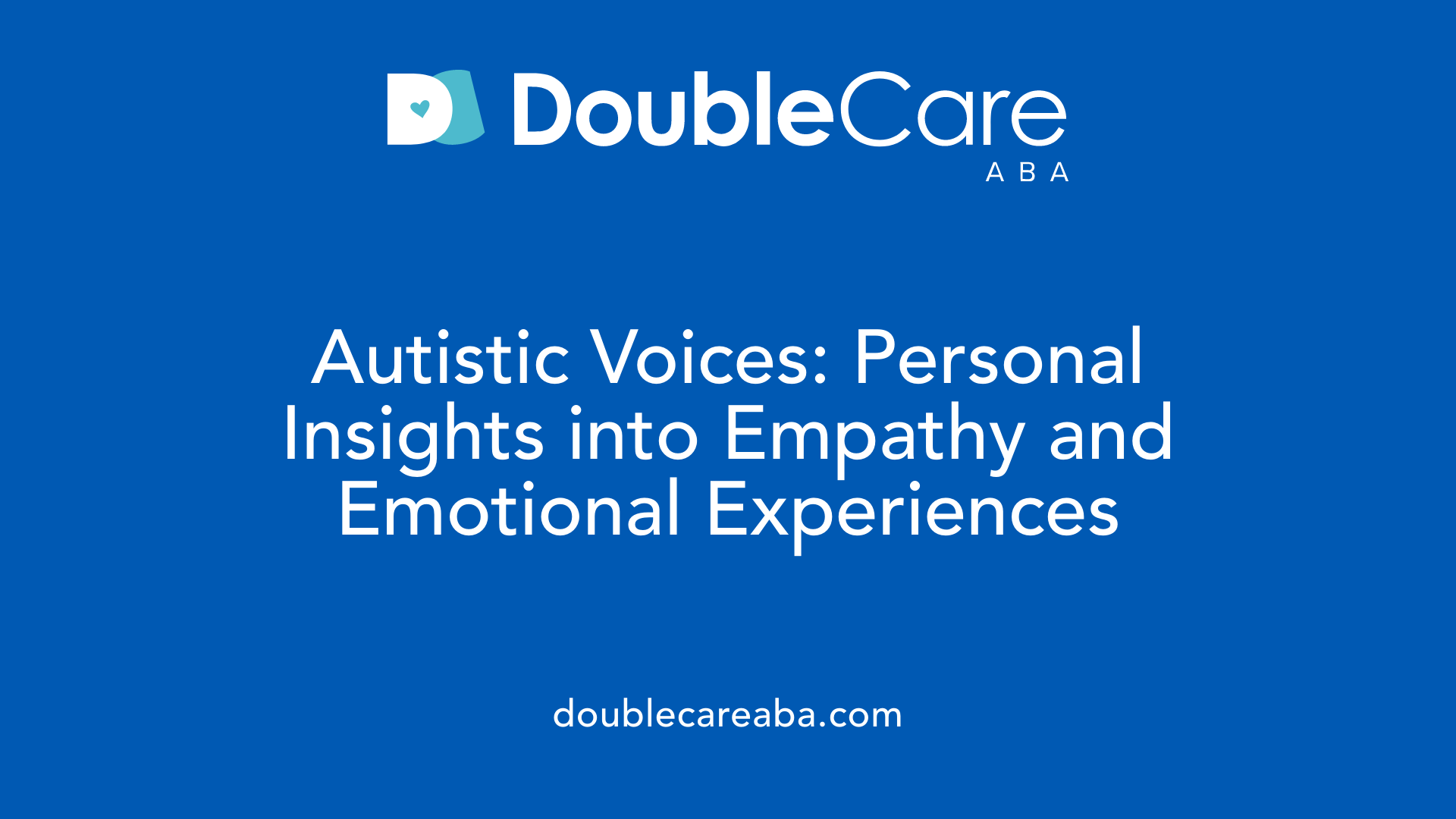
What insights have autistic individuals shared about their own experiences and perceptions of empathy?
Autistic individuals often describe their experience of empathy as profound and genuine, though they may face difficulties in expressing or managing their emotional responses. Many report feeling strong or even overwhelming reactions to others’ emotions, which can sometimes lead to distress or feeling overwhelmed.
They highlight that decoding social cues, such as facial expressions, gestures, and tone of voice, is not always straightforward. This challenge can mask their empathetic feelings, leading others to mistakenly believe they lack empathy. Interestingly, many autistic people find it easier to perceive and resonate with the emotions of animals or other autistic individuals, suggesting that social proximity and shared experiences influence empathic responses.
Autistic voices emphasize that their empathy includes both affective (emotional) and cognitive (perspective-taking) elements. However, an imbalance—where emotional empathy tends to be stronger than cognitive empathy—is common. This phenomenon, described as empathic disequilibrium, can sometimes make it difficult for autistic individuals to interpret social situations effectively.
Importantly, these personal insights challenge stereotypes that associate autism with a lack of empathy. Instead, they point to the diversity of empathic experiences within the autism spectrum. Many autistic individuals note that their empathy is genuine and that societal misconceptions often overlook or misunderstand their emotional worlds.
By sharing their experiences, autistic voices contribute to a broader understanding that empathy in autism is complex, multidimensional, and richly felt, despite surface-level social differences or outward expressions. Recognizing this diversity fosters greater acceptance and helps dispel harmful stereotypes rooted in outdated or incomplete narratives.
Gender Differences in Empathy Among Autistic People
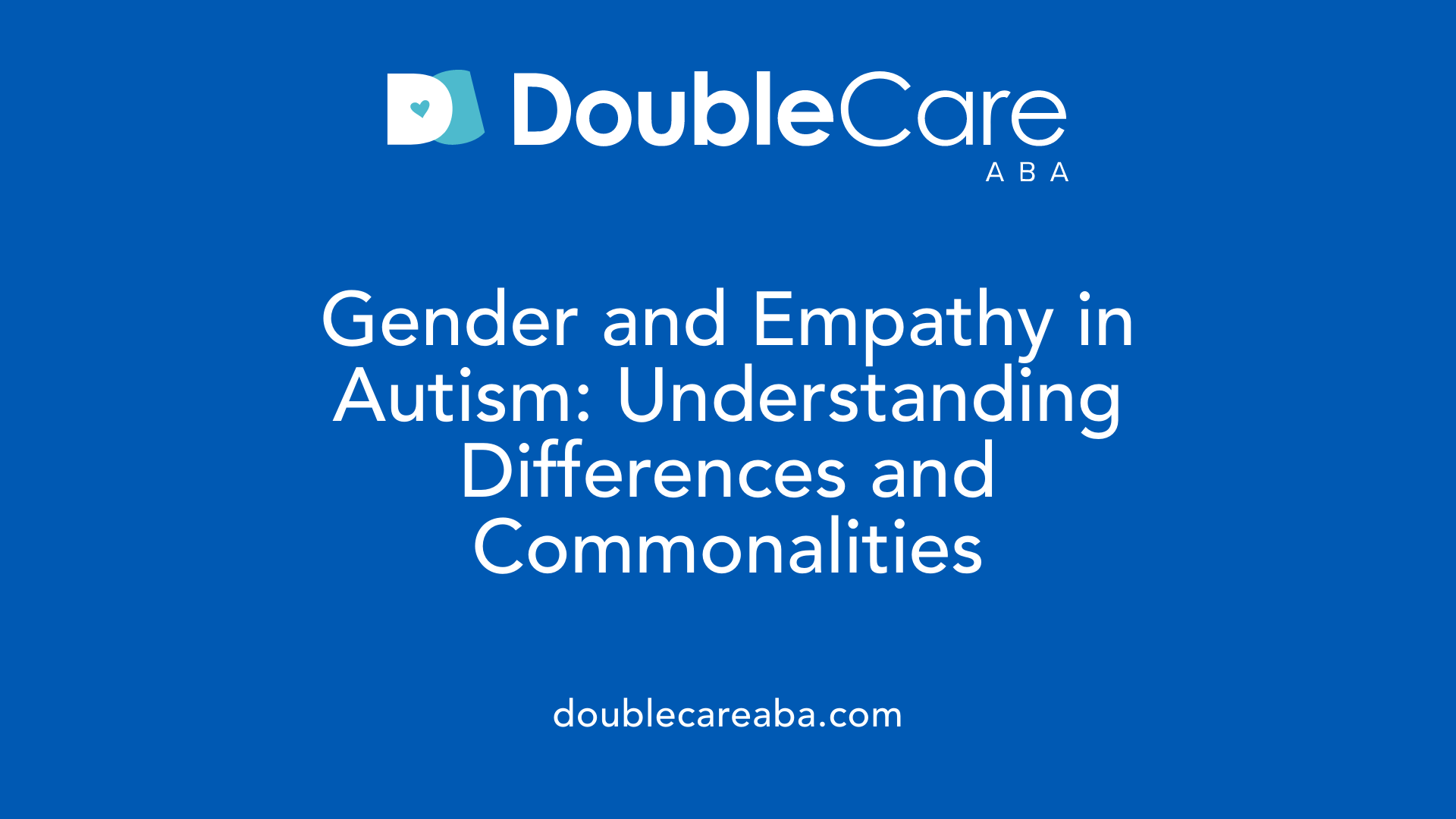
Are there differences in empathy related to gender among autistic individuals?
Research highlights that gender plays a significant role in how empathy manifests in autistic individuals. Females on the autism spectrum often display more advanced social skills and are more likely to engage in emotion-focused responses compared to their male counterparts.
Studies show that autistic girls tend to exhibit empathic behaviors similar to neurotypical females. These behaviors include comforting others, expressing warmth, and showing emotional investment in relationships. In contrast, autistic boys might prioritize problem-solving or straightforwardly addressing social situations, which can sometimes be misinterpreted as a lack of empathy.
Neuroimaging studies further reveal differences in brain activity related to empathy. Females with ASD demonstrate attenuated activation in key regions such as the anterior insula, an area critical for emotional awareness and interoception. These neural patterns suggest that although females may experience empathy internally, they might face challenges in processing and expressing these feelings in complex social settings.
Additionally, females with autism tend to experience increased egocentric bias during social tasks. This means they may find it more difficult to detach from their own perspective and accurately interpret others' emotions, especially in nuanced or multifaceted interactions.
Socialization and cultural expectations also influence empathic behavior. Females are often encouraged to be more emotionally expressive, which might shape their empathic responses and coping strategies. Meanwhile, societal norms may lead autistic males to suppress emotional displays or focus on direct problem-solving.
Overall, while both autistic females and males experience emotional empathy, their ways of processing, expressing, and regulating these responses differ. Neural mechanisms, social learning, and individual differences contribute to this variability.
These nuances emphasize the importance of considering gender in autism research and support practices. Recognizing the distinct ways empathy is experienced across genders can lead to more tailored interventions and greater social understanding, reducing stigma and enhancing social integration for autistic individuals.
The Double Empathy Problem and Its Significance
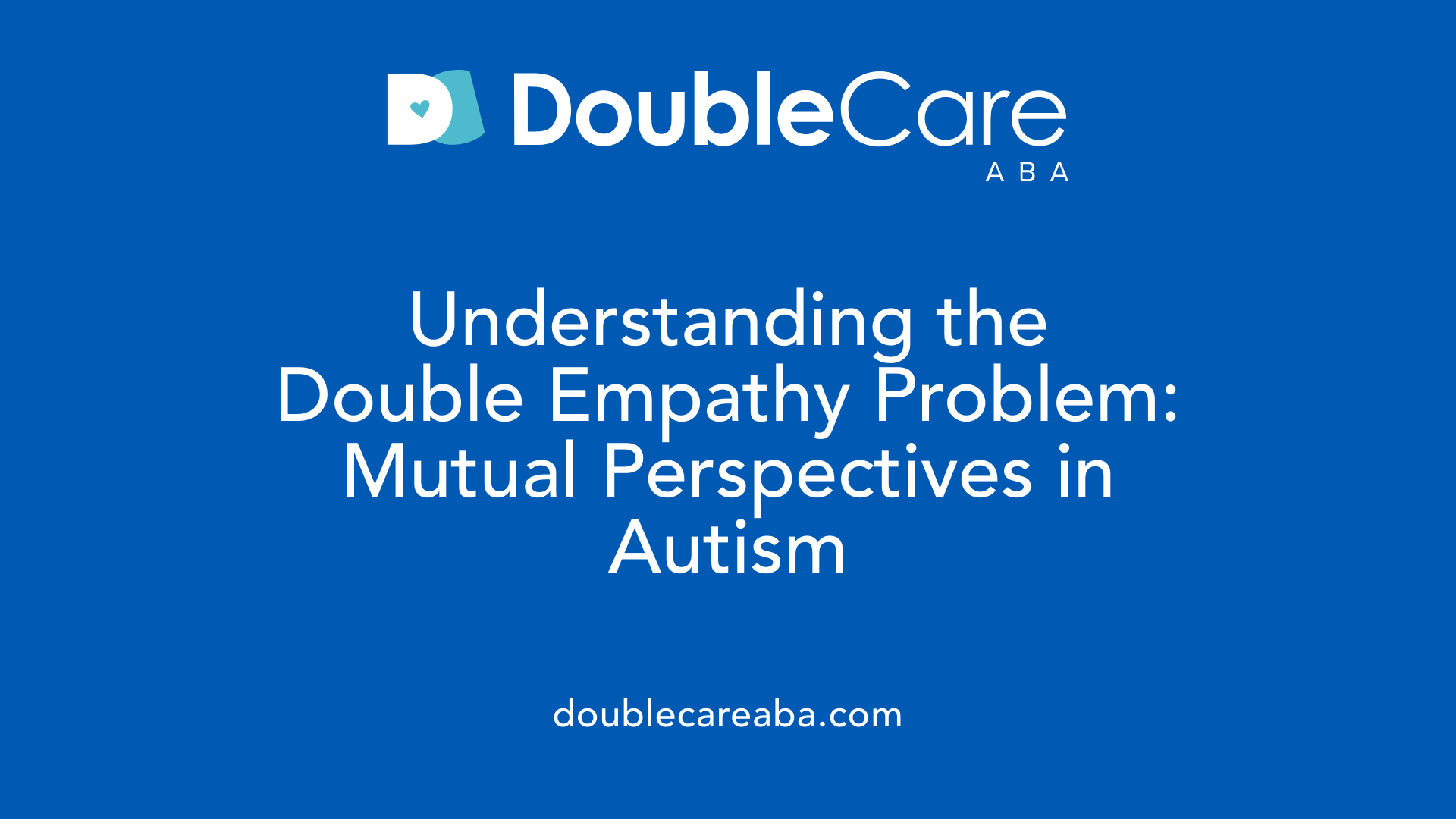
How does the double empathy problem provide a framework for understanding social interactions between autistic and non-autistic people?
The double empathy problem offers a fresh perspective on social interactions that moves beyond the traditional view of deficits within autistic individuals. Instead, it emphasizes that misunderstandings between autistic and non-autistic people are mutual and rooted in differences in communication styles, social experiences, and perspectives.
This concept suggests that both groups can have difficulty understanding each other because they often think and communicate differently. Research has demonstrated that autistic people tend to communicate more effectively with others on the spectrum, indicating that much of the misunderstanding is due to these social and experiential differences rather than individual impairments.
By focusing on reciprocal understanding, the double empathy problem encourages approaches that foster empathy and dialogue between groups. It highlights that social challenges are not solely the fault of autistic individuals but are shared experiences resulting from mismatched social expectations.
This framework shifts the focus from trying to 'correct' autistic behavior to promoting mutual understanding and respect. It suggests that improving communication and awareness can help bridge the gap, creating more inclusive and empathetic social environments.
Overall, recognizing the double empathy problem underscores that social difficulties are a two-way street, involving both autistic and non-autistic perspectives. This understanding advocates for more compassionate, reciprocal strategies to enhance social cohesion and reduce prejudice.
Embracing Complexity for Better Support and Understanding
Recognizing the diverse experiences and expressions of empathy in autism is crucial for fostering respect, reducing stereotypes, and promoting inclusive social environments. Moving beyond outdated deficit models, embracing nuanced frameworks like the double empathy problem, and listening to autistic voices themselves can lead to more effective support strategies and societal acceptance. Understanding that empathy is multifaceted, context-dependent, and often intensified rather than absent helps dismantle harmful myths and creates a more compassionate world where autistic individuals are seen and valued for their unique emotional worlds.
References
- Autism and empathy - National Autistic Society
- Reexamining empathy in autism: Empathic disequilibrium as a novel ...
- Impairment of affective and cognitive empathy in high functioning ...
- Do autistic people have empathy? - Medical News Today
- Understanding Empathy and Autism - Attwood & Garnett Events
- An Expert Discussion on Autism and Empathy - PMC
- Autism as a Disorder of Affective Empathy - Karger Publishers
- Autistic People's Experience of Empathy and ... - Mary Ann Liebert, Inc.
- Navigating the Experience of Hyper-Empathy in Autism
- Autism, Asperger's, and Empathy: Know the Facts | Psych Central














